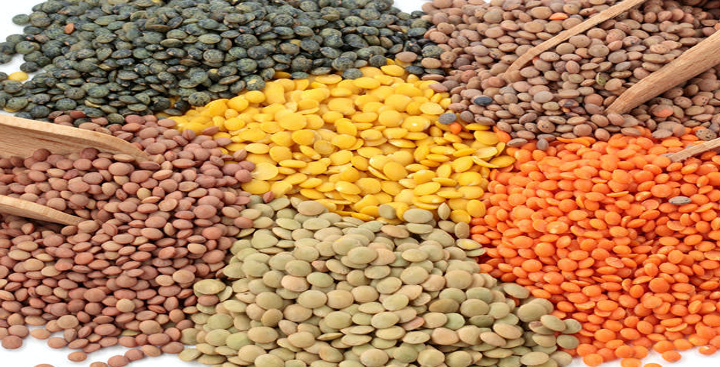
By Stephanie Polizzi, MPH, RDN, DipACLM
Lentils are small, edible seeds that are members of the legume family.
Like their cousins, beans, split peas and peanuts, they grow in pods. Lentils derive their name from their lens-like shape. Although they have been cultivated for over 8,000 years, they came to the US in the early 16th century and became popular as a meat substitute during World War II. They make a great meat substitute as they are high in protein, nearly fat free, and contain no cholesterol (only found in animal foods). In addition, lentils cost only pennies per serving.
Lentils are available in a variety of colors ranging from green to brown, red, yellow, orange and even black, and are famous for their high nutrient value. All varieties of lentils are revered for their high protein and fiber. Just one-half cup of cooked lentils provides at least 9 grams of protein and 8 grams of fiber. Like other legumes, lentils contain soluble fiber, which is known to lower cholesterol and regulate blood sugars. Fiber also contributes to feelings of fullness, so it is a must for those looking to lower Calories and control their weight. Lentils are high in polyphenols, which are antioxidant and anti-inflammatory compounds associated with reduced risk of diabetes, obesity, cancer and heart disease.
Other nutrients of mention include folic acid, potassium and magnesium which all support heart health. The magnesium and potassium work together to lower blood pressure. The folate also protects against neural tube defects during pregnancy. Lentils are a good source of phosphorus, an essential mineral component of bone, tooth enamel and RNA/DNA. Lentils contain calcium, iron and less than half a gram of fat, the unsaturated healthy variety.
Lentils can be found as whole or split (husks removed). Whole lentils retain their shape when cooked (green), whereas split lentils break down into a puree (red/orange). Before cooking, rinse to remove any debris. Pre-soaking is not necessary since lentils cook more quickly than beans. Cook lentils in water by bringing to boil and then simmering until tender. Whole lentils (green, black) will cook in 20-30 minutes and split lentils (yellow, orange, red) will cook in about 15 minutes. Use whole lentils as side dishes or in soups or salads. Split lentils are best to use to thicken soups, sauces or gravies.
Lentils can replace meat and or beans in recipes. Substitute lentils for meat in soups, chili, stew or taco filling, or blend into paste to add to burgers or meatballs. Try tossing cooked lentils into salads, vegetable side dishes or fold into omelets. Add dry lentils to soups or gravies while cooking to thicken. Orange lentils are a great addition to tomato sauce since they add fiber and nutrients while thickening your sauce, without changing the flavor. Puree cooked yellow or red lentils to make a colorful variety of hummus. You can also substitute cooked, pureed lentils for half the fat in brownies or other baked goods.
Like other legumes, lentils are high in fiber. High fiber diets also require plenty of water. If adding lentils and other legumes to your diet for the first time, be sure to drink plenty of water.
